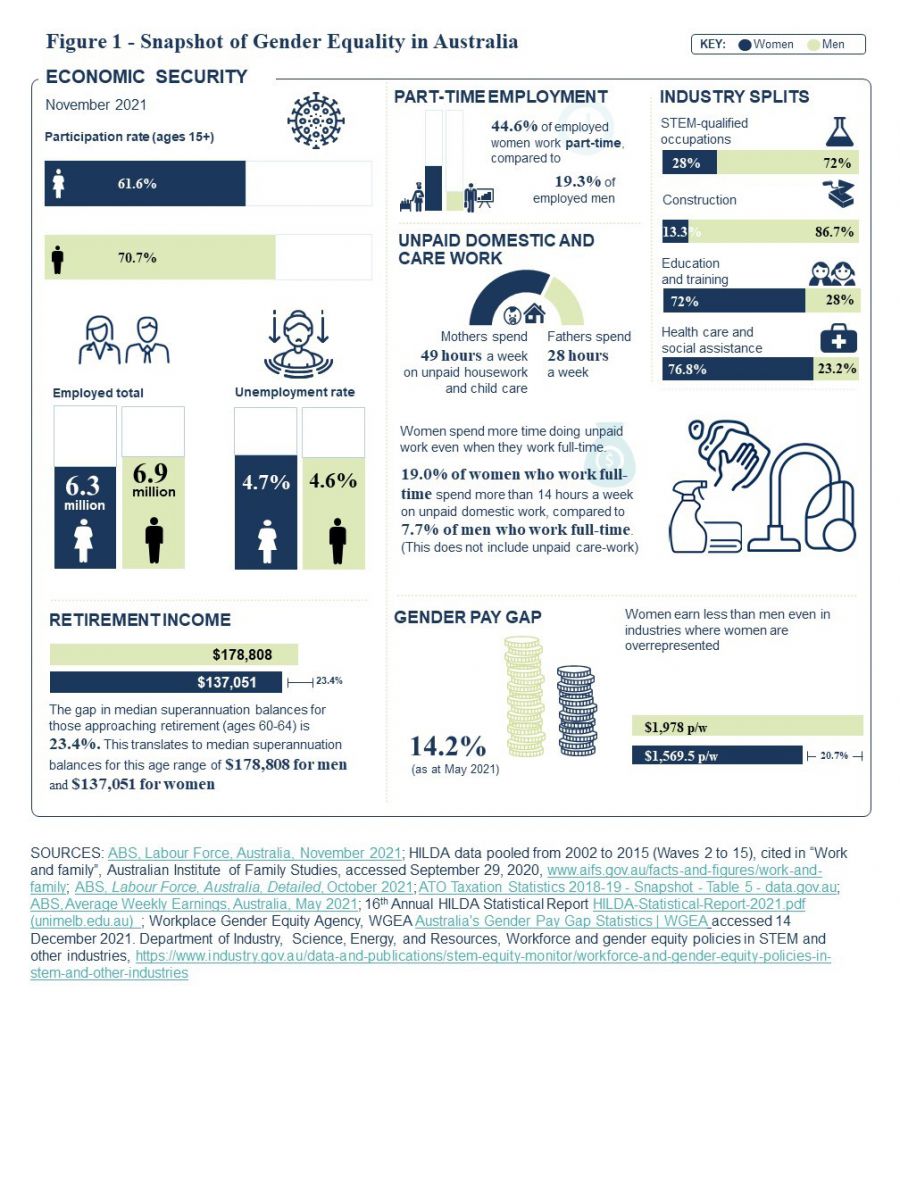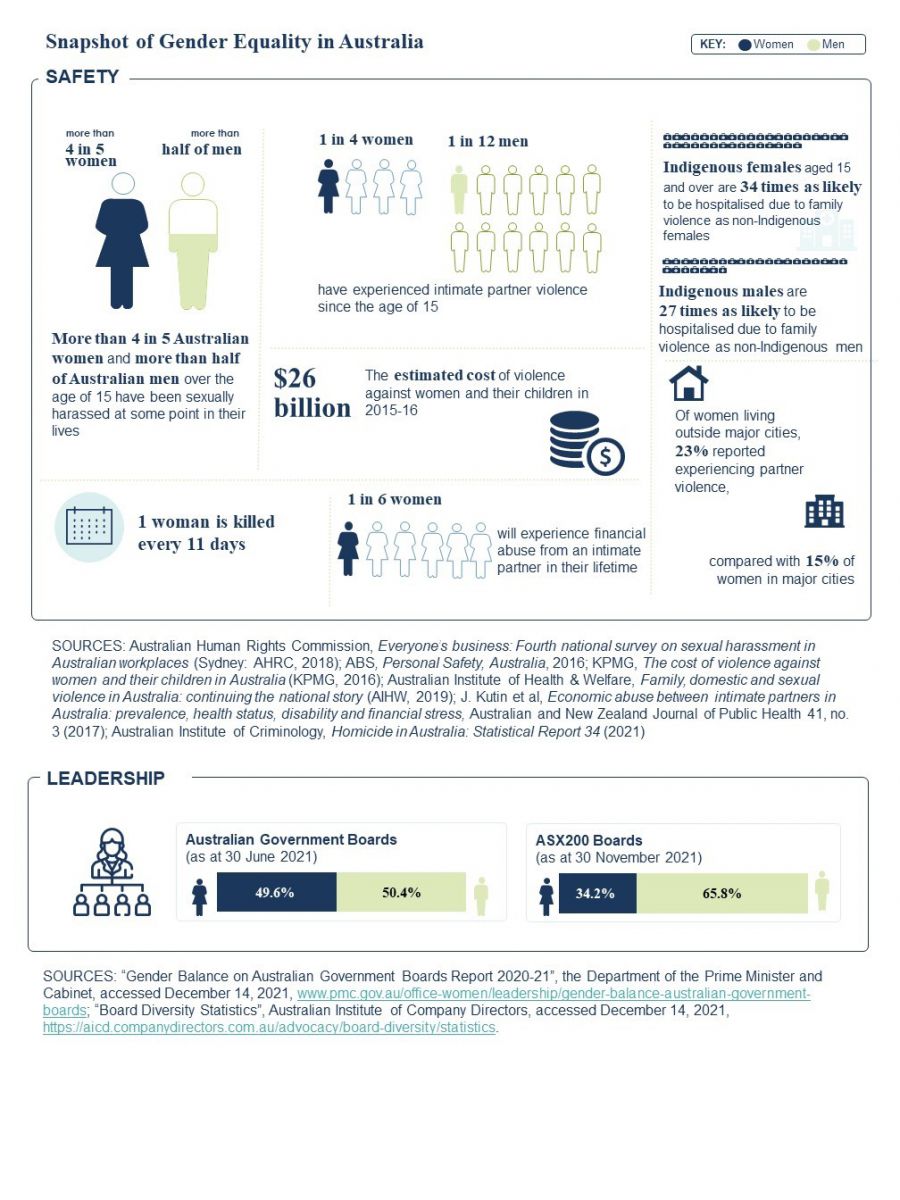One of the key themes in the consultation feedback was the need to accelerate progress on gender equality in Australian workplaces. While progress has been made, there is more to do. Gender inequality persists across women’s economic security, women’s safety and women’s leadership as shown in the Snapshot of Gender Equality in Australia at figure 1.
Stakeholders want to see faster change in narrowing the gender pay gap noting it is an important indicator of women’s overall position in the paid workforce. The national average full-time gender pay gap is 14.2 per cent (based on ABS data). In recent years the national gender pay gap has been narrowing, as shown in the WGEA Fact Sheet on Australia’s Gender Pay Gap Statistics (see ‘the national gender pay gap over time’ in the Fact Sheet in Appendix 6). However, there continues to be a gender pay gap in favour of men across all industries, even female-dominated industries. This compounds in an average 23 per cent superannuation gap, leaving more women economically insecure in retirement.
There continues to be a substantial workforce participation gap between women and men. More women work part-time (43.4 per cent) than men (18.7 per cent). Only a small proportion of men work flexibly or take parental leave. Women are under-represented in STEM education and careers, and under-represented in higher paid trades.
Women experience significantly more sexual harassment at work than men. Women’s experience of violence – at home, online and in the community – constrains their workforce participation. Online abuse disproportionately impacts women, undermining their economic and professional opportunities.
There has been some progress on women’s leadership. ASX200 companies have made progress on women’s leadership, achieving the 30 per cent target set by the 30% Club Australia and the Australian Institute of Company Directors (AICD). However, there are only 18 women CEOs in the ASX300 and of the 23 CEO appointments in 2020-21 only one woman was appointed.
This brief snapshot of gender equality underlines the need to monitor and improve gender equality in workplaces. The recommendations in this report will help WGEA support businesses take action on gender equality in their workplaces.
Figure 1 – Snapshot of Gender Equality in Australia


